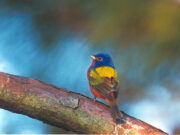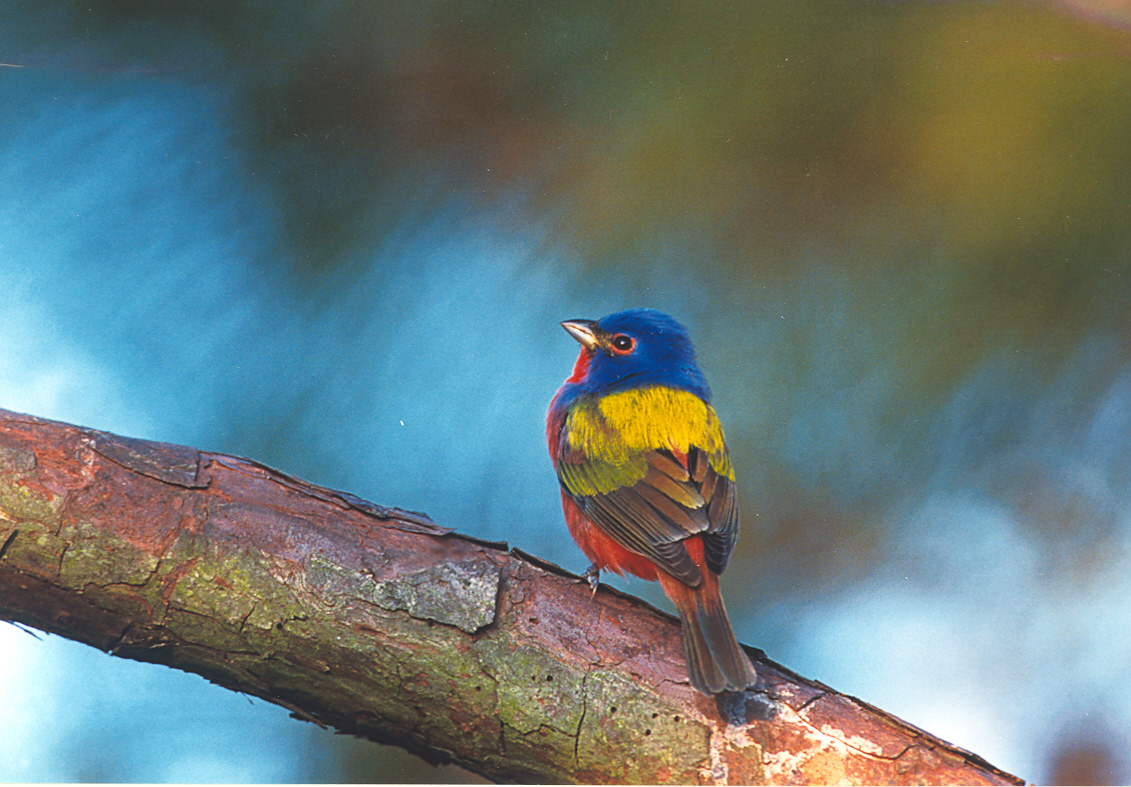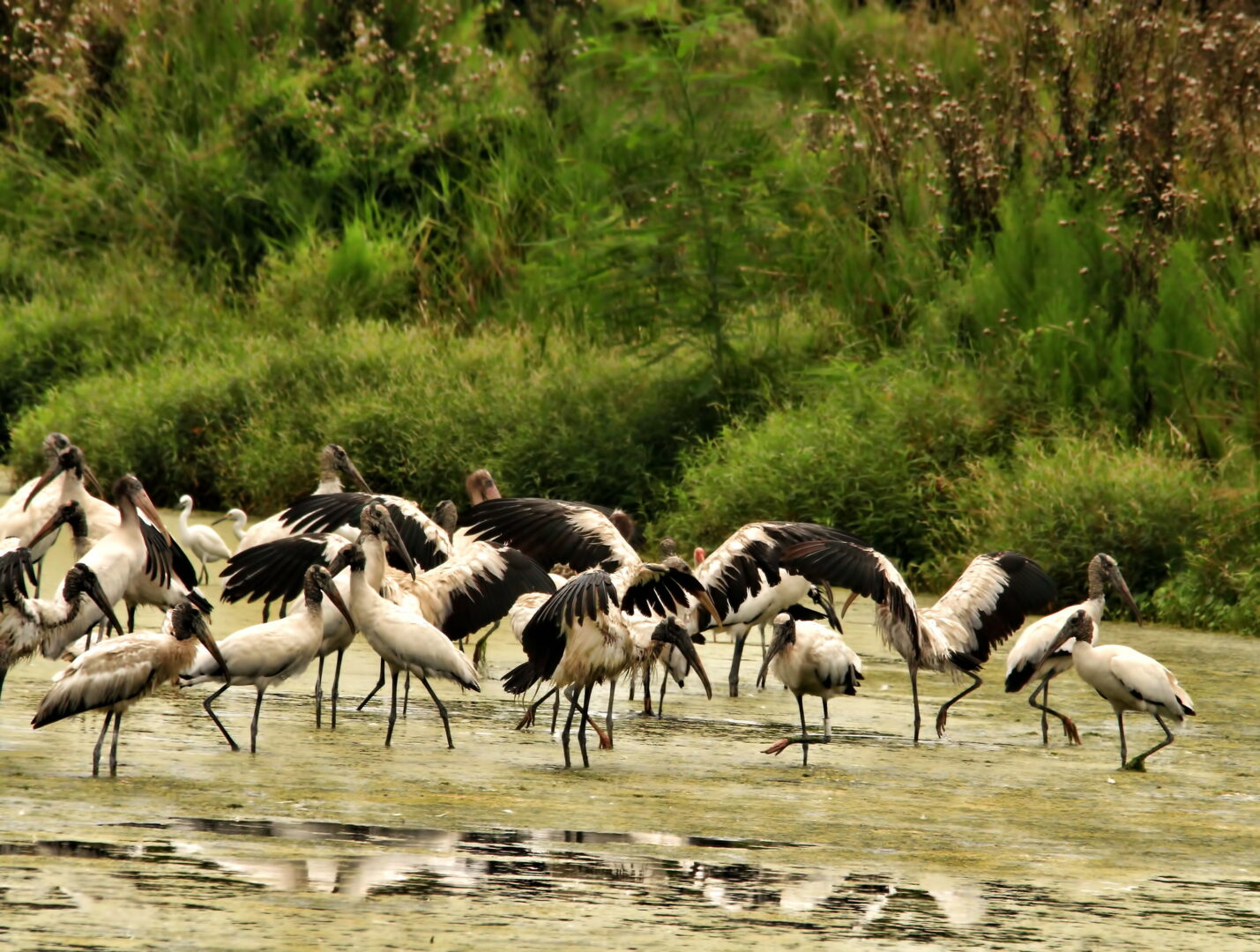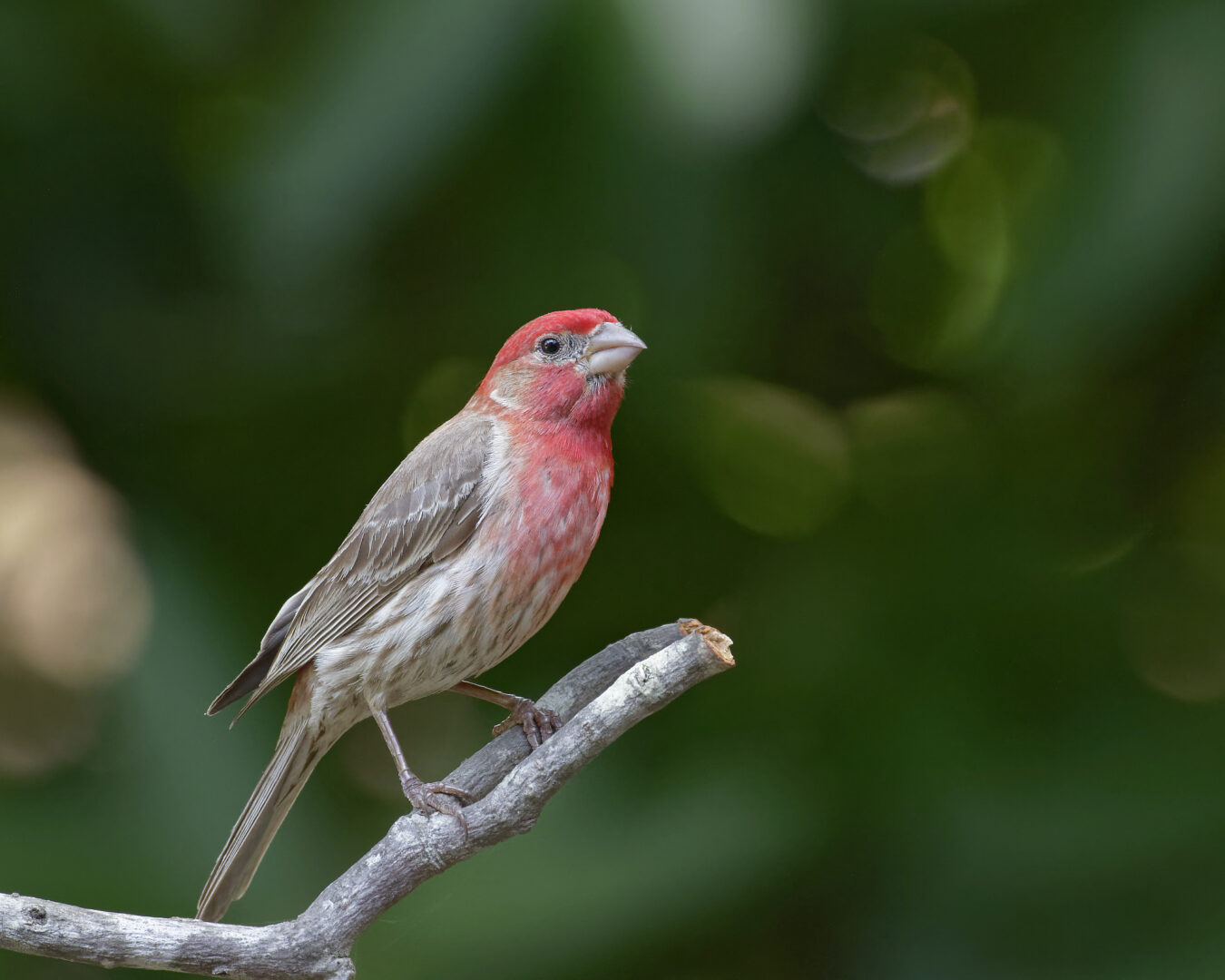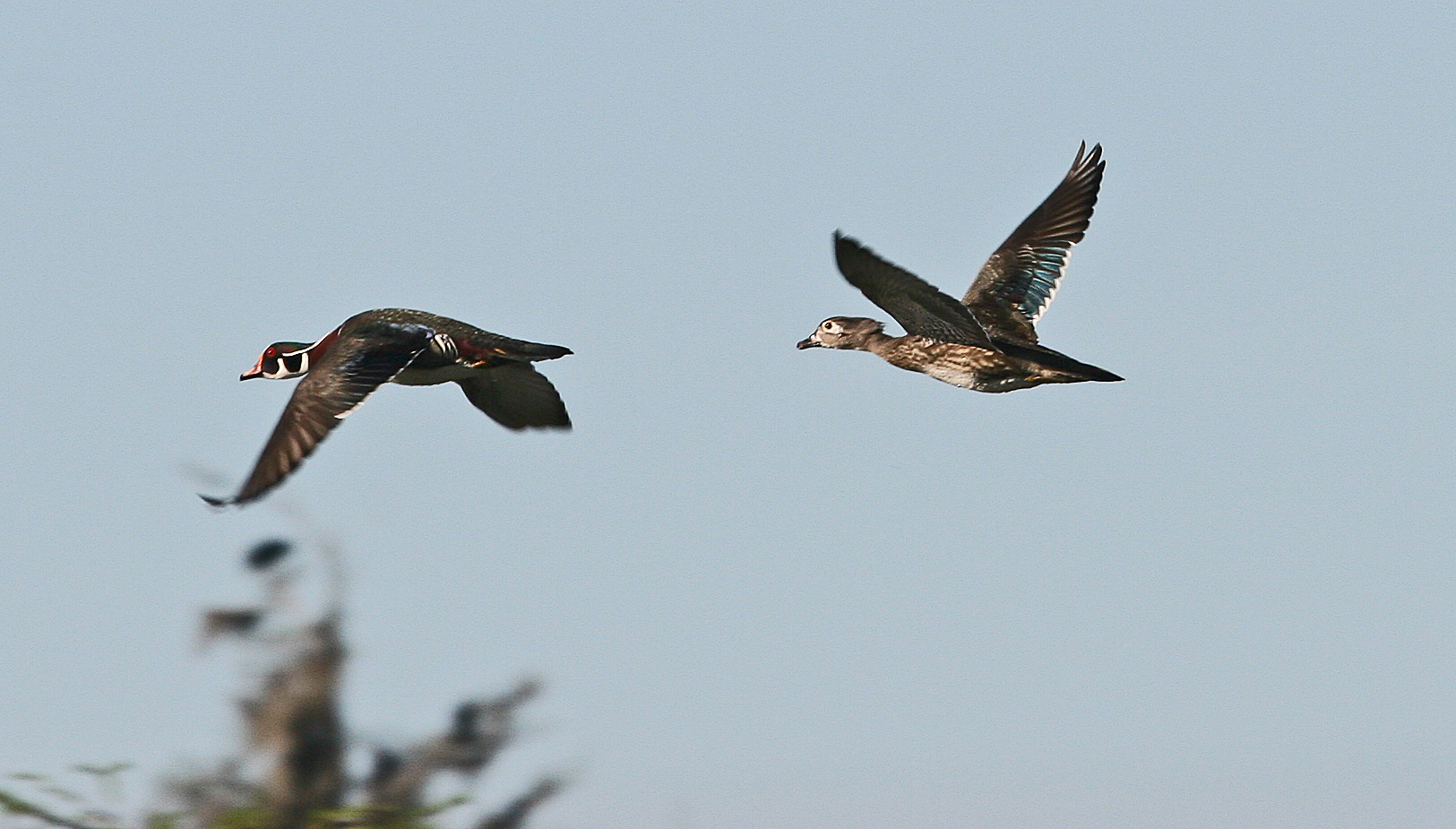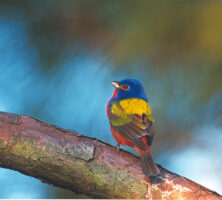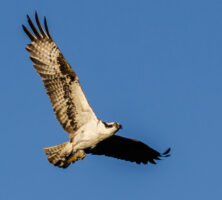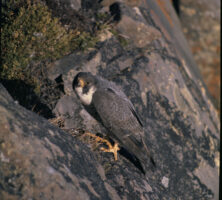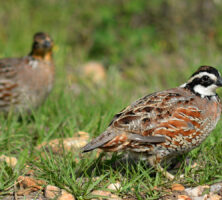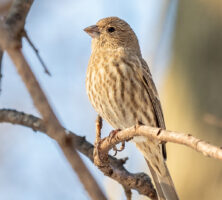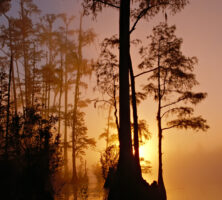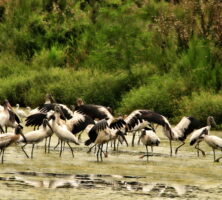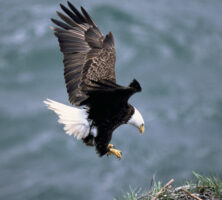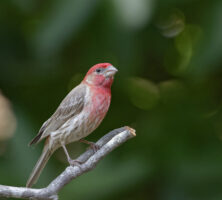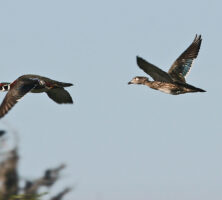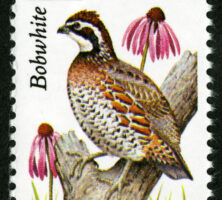Birds, more than any other vertebrate (an animal with a backbone), dominate Georgia’s landscapes. The state’s diversity of habitats and physical features, from the northern mountains to the swamps and coastal islands, provides habitats for approximately 347 species of birds that live in Georgia at some point during their lifetimes. Between 90 and 110 species breed and nest in south Georgia. This number increases in north Georgia to almost 130 nesting birds. The study of birds, also called ornithology, began as early as 1723 in Georgia.
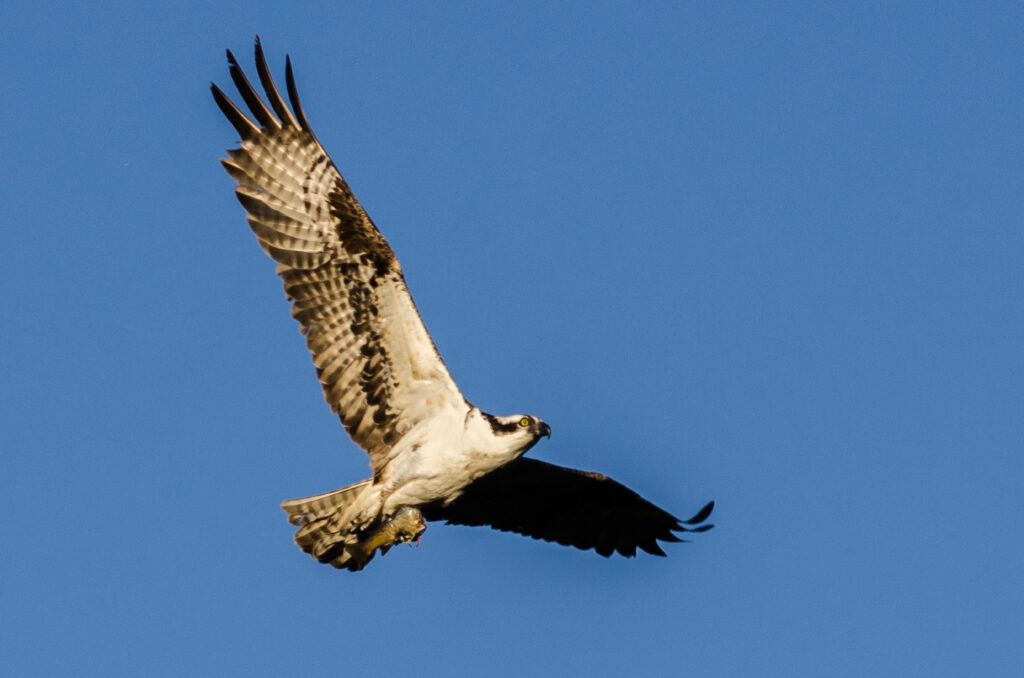
Image from Colby Stopa
Georgia’s birds are divided into four groups based on their seasonal activity in the state. Some are permanent residents of Georgia, such as the northern cardinal (Cardinalis cardinalis), while others, such as the indigo bunting (Passerina cyanea), are summer-breeding birds that migrate from Central and South America (neotropics) and the Caribbean in the spring. Summer-breeding birds nest in Georgia but return south to the neotropics in the fall. Others migrate from the north in late fall. The birds in this second migratory group are called winter residents, and they return north to nest in the spring. Neotropical migrants also pass through Georgia in the spring and fall while traveling to and from their summer nesting grounds in the northern states and Canada. These migrants are called visitors or spring/fall migrants.
Taxonomy is the science of grouping together related animals based on their natural relationships. About sixty taxonomic bird families are found in Georgia. Birds from different families range in size and shape, from the larger loons and hawks to the smaller finches and sparrows. Scientists, hunters, and birders also put birds into groups based on their common habits or on their usefulness to humans. For example, waterbirds are birds that nest and feed near water, but waterfowl are birds that are watched or hunted as game and are also called gamebirds. Small perching birds, sometimes called songbirds because they sing during the nesting season, may or may not be related taxonomically to each other but are grouped together for convenience. Georgia even has political birds. The brown thrasher (Toxostoma rufum) is the state songbird, and the northern bobwhite (Colinus virginianus), or quail, is the state gamebird.
History of Ornithology in Georgia
Since the early 1700s many people have tallied and studied the birds of Georgia. Mark Catesby, the first ornithologist in Georgia, arrived in 1723 on the Savannah River below present-day Augusta. He traveled throughout Georgia and the Carolinas, collecting plants and studying birds. From 1730 to 1748 Catesby published records and illustrations of 109 birds from Georgia in The Natural History of Carolina, Florida, and the Bahama Islands. From 1773 to 1777 the naturalist William Bartram, traveling the same trails in Georgia as had his father, John Bartram, listed 215 birds, which were later published in his book Travels in 1791. The artist and naturalist John James Audubon studied Georgia’s birds in the nineteenth century while completing the seven-volume Birds of America, which included drawings and paintings of the various species he encountered in Georgia. John Abbot of Bulloch County and Alexander Wilson of Philadelphia, Pennsylvania, produced or published important descriptions and paintings of Georgia’s birds, some of which were newly discovered species, from 1790 to 1814.
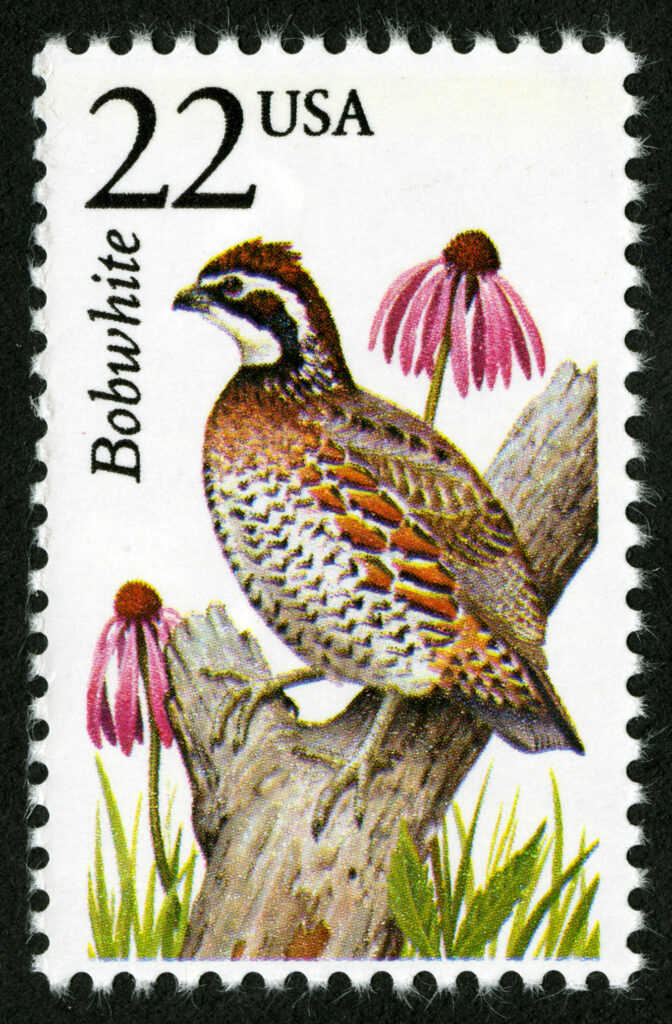
Courtesy of Smithsonian National Postal Museum
The LeContes of Liberty County contributed the first list of birds in Georgia (273 species), which was published in Statistics of the State of Georgia by George White (1849). In 1892 Vernon Bailey of the U.S. Biological Survey (now the U.S. Fish and Wildlife Service) conducted the first field project for his agency in Georgia by collecting birds for ten days on the old LeConte plantation in Liberty County. By the late 1880s resident, skilled amateur ornithologists of Georgia became active in field studies. Eugene Murphy, of the middle Savannah River valley, studied birds from 1890 to 1952 and published an extensive paper in 1937 on the birds in that valley. Also at that time, Robert Windsor Smith, of Kirkwood, began to study and collect birds. Much of his collection is housed at the Fernbank Science Center in Atlanta. Another large collection of birds, numbering nearly 2,000, was completed by William LaPrade Jr., a Methodist minister from north Georgia.
In modern times Thomas Burleigh is recognized as the Georgia ornithologist who contributed above all others. Burleigh arrived in Athens in 1920 and taught on the faculty of the University of Georgia’s forestry school until 1930. He returned to Athens in 1945 to complete fieldwork and writing on birds in the state. His collection of prepared bird skins totaled more than 3,000. The culmination of his work produced Georgia Birds, the first comprehensive state bird book, in 1958. Many others, both professionals and skilled amateurs, including J. Fred Denton (north Georgia birds), Earle Greene Jr. (Okefenokee Swamp birds), William Griffin (Atlanta birds), Frederick Hebard (Okefenokee Swamp birds), Milton Hopkins (southwest Georgia birds), David Johnston (breeding birds and habit changes), Brooke Meanley (Swainson’s warblers near Macon), Robert Norris (southwest Georgia birds), Eugene Odum (ecology of birds), Herbert L. Stoddard (quail studies), and Ivan Tomkins (Savannah birds), have contributed a wealth of knowledge about the state’s birds. In December 1936 Norman Giles Jr. and Don Eyles of Atlanta founded the state bird journal The Oriole, a publication of the Georgia Ornithological Society. The society maintains a library at the University of Georgia.

Courtesy of Warnell School of Forest Resources, University of Georgia
Geographic Features, Habitats, and Bird Communities
Georgia’s high degree of physiographic diversity is evident from the contrast between its mountains in the north and its river swamps in the south. Birds are associated with physiographic regions (the Blue Ridge, Cumberland Plateau, Ridge and Valley, Piedmont, and Coastal Plain) of the state as well as the habitats or landscapes found in those regions.
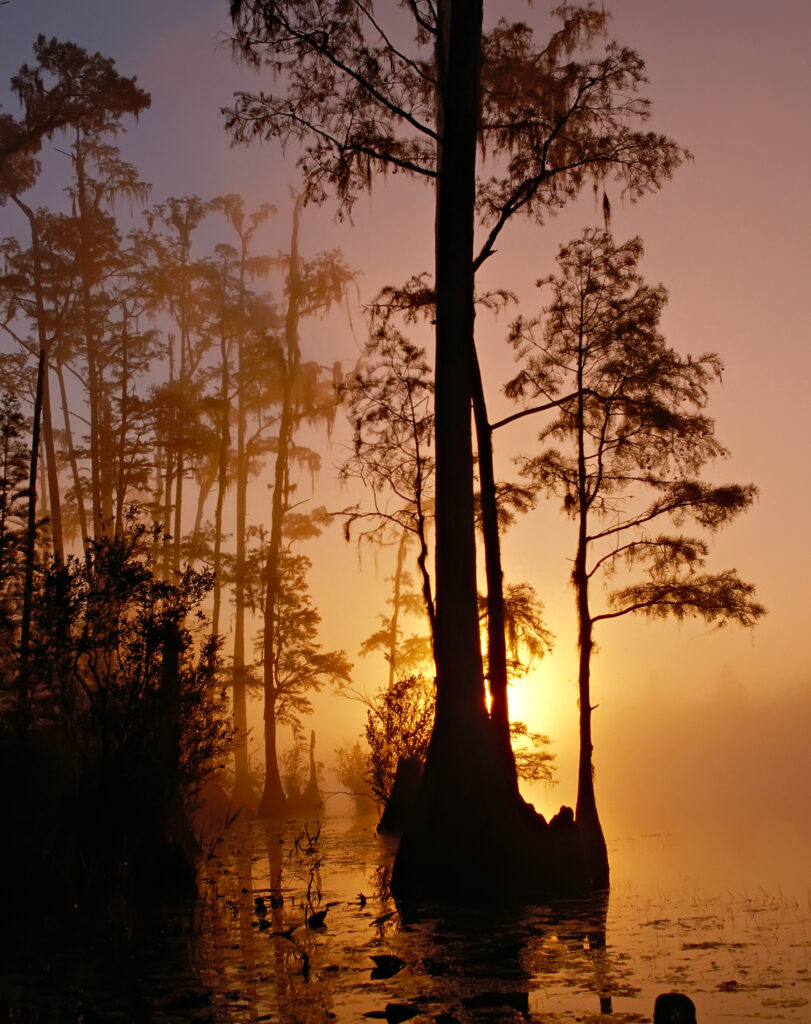
Image from George Gentry - US Fish and Wildlife Service
Birds living in the Blue Ridge, or mountain, region are those commonly found in more northern regions of the United States. The weather in Georgia’s mountains (elevation 3,000 to 4,700 feet) is similar to that of southern New England, making this region the coldest and wettest part of Georgia. The Blue Ridge represents an important but relatively small area of breeding-bird diversity. About 130 species nest there in spring and summer. Found only in Georgia at elevations above 3,500 feet are nesting Canada warblers (Wilsonia canadensis), winter wrens (Troglodytes troglodytes), veerys (Catharus fuscescens), yellow-bellied sapsuckers (Sphyrapicus varius), and dark-eyed juncos (Junco hyemalis). Nine other species are found nesting in Georgia only at elevations between 1,700 and 2,700 feet.
The Cumberland Plateau, which is part of the Appalachian Plateau, and the Ridge and Valley regions of northwest Georgia represent a small area of the state. The climate and habitat of these regions are similar to those found in the Piedmont, and these regions are warmer and drier than the mountain region. Oak-pine forests are common in areas that are not cultivated or developed; national forest land comprises mostly hardwood trees. Most private lands are farmed, planted with pines, or developed. Ninety-four species nest in the Ridge and Valley region, and none are unique to the state. Possibly seventy-five species nest in the Cumberland Plateau region. Peregrine falcons (Falco peregrinus), once common to Georgia’s Cumberland Plateau, were eliminated in the eastern United States by the pesticide DDT but have recovered. In Georgia a single pair of peregrines began nesting on the ledge of a building in downtown Atlanta in 1996.
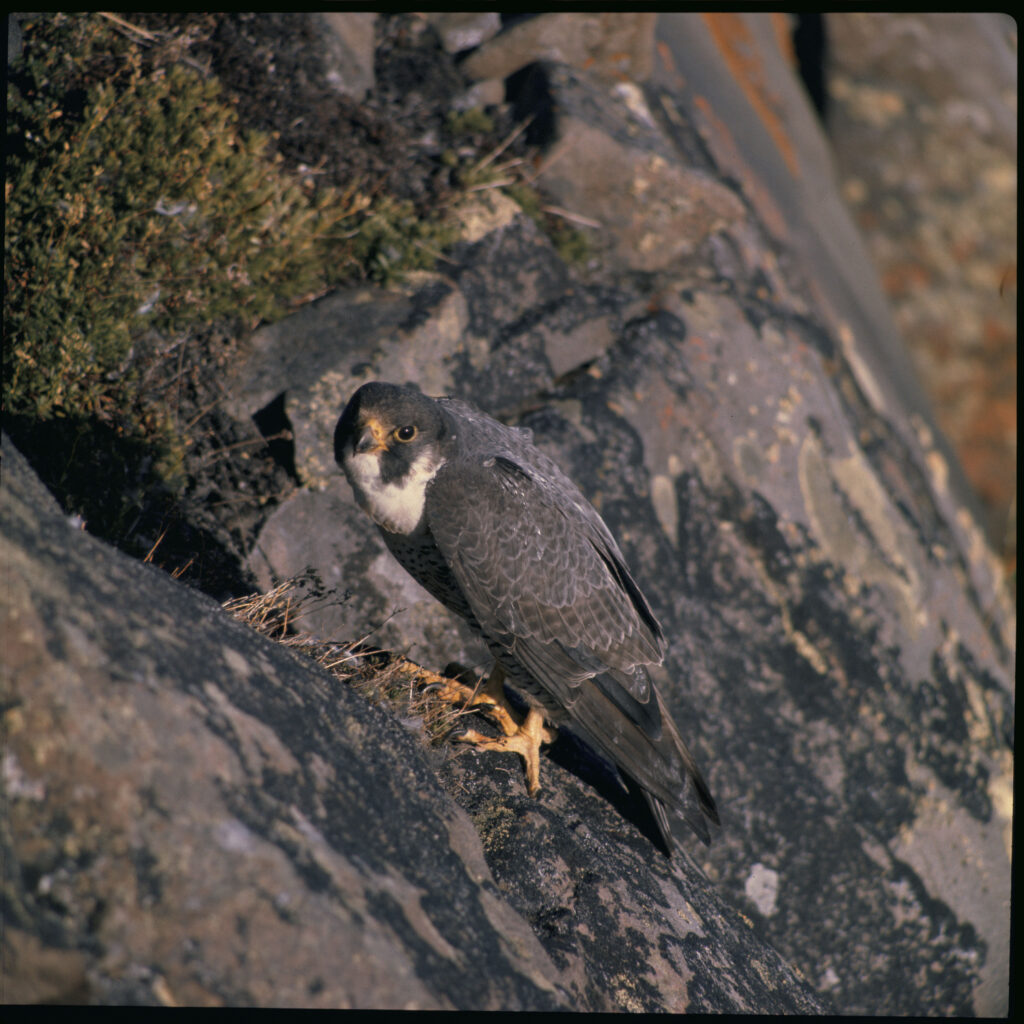
Courtesy of U.S. Fish and Wildlife Service
The rolling hills of the Piedmont region once supported large agricultural fields but now are scattered with pine and hardwood forests of many ages. About 110 to 115 species of birds nest in the region. The Piedmont is also an area with an increasing number of nesting birds that have been invading the area, mainly from the north, during the last fifty years.
The Coastal Plain covers the southern half of the state. About 110 breeding species nest in this region. The red-cockaded woodpecker (Picoides borealis), an endangered bird, is limited to southern pine forests, especially to the longleaf pine of the Coastal Plain. The colorful painted bunting (Passerina ciris) nests along coastal areas, especially on barrier islands; near wetlands; and near rivers with grassy glades containing shrubs. Large heron and egret nesting colonies, some with more than 30,000 nests, are also common in the Coastal Plain and include the much smaller nesting colonies of the endangered wood storks (Mycteria americana). Wetland bird habitat is important in south Georgia, where one of the largest swamps in North America, the Okefenokee Swamp, floods nearly 400,000 acres. About 232 different birds can be found in the swamp, which provides habitat for 64 nesting species.
How Birds Relate to Plants and Landscape Changes
Bird communities change with plant communities. Abandoned farmland becomes grassland for five to seven years. Gradually shrubs and trees, first pine and then deciduous hardwoods, invade the fields. Eventually, in 75 to 100 years, such areas will become oak-hickory forest in most parts of Georgia. Swamp forest develops in similar ways and eventually becomes old-growth cypress forest and then southern mixed-hardwood swamp forest as water levels decline.
How do Georgia’s bird communities change alongside vegetation changes? Few birds nest in the grassland habitat of an abandoned farm field during the first five to ten years; usually only one to three bird species are found. In five to twenty years, as shrubs and small trees invade the area, more nesting birds are found, usually eight to twelve species. Grassland nesting species, such as the eastern meadowlark (Sturnella magna), begin to leave the habitat as yellow-breasted chats (Icteria virens) begin tonest there. After twenty years, dense pine trees overtake the area, and the number of bird species nesting in the abandoned fields declines to five or six, unless the trees are thinned by foresters or ice storms, which will increase the number of nesting bird species. Pine trees shade out understory shrubs from year twenty to year thirty-five. Pine warblers (Dendroica pinus) then begin nesting in the young forest. The number of nesting bird species gradually increases again to twenty or more as the forest grows older than thirty-five years. In 75 to 100 years, an old-growth oak-hickory forest will occupy the abandoned farm field. Pileated woodpeckers (Dryocopus pileatus) and other hole-nesting species are commonly found nesting in dead pine and hardwood trees. Twenty to thirty species of birds will nest in the oak-hickory forest, on the same land that only may have had two or three species nesting there when it was cultivated.
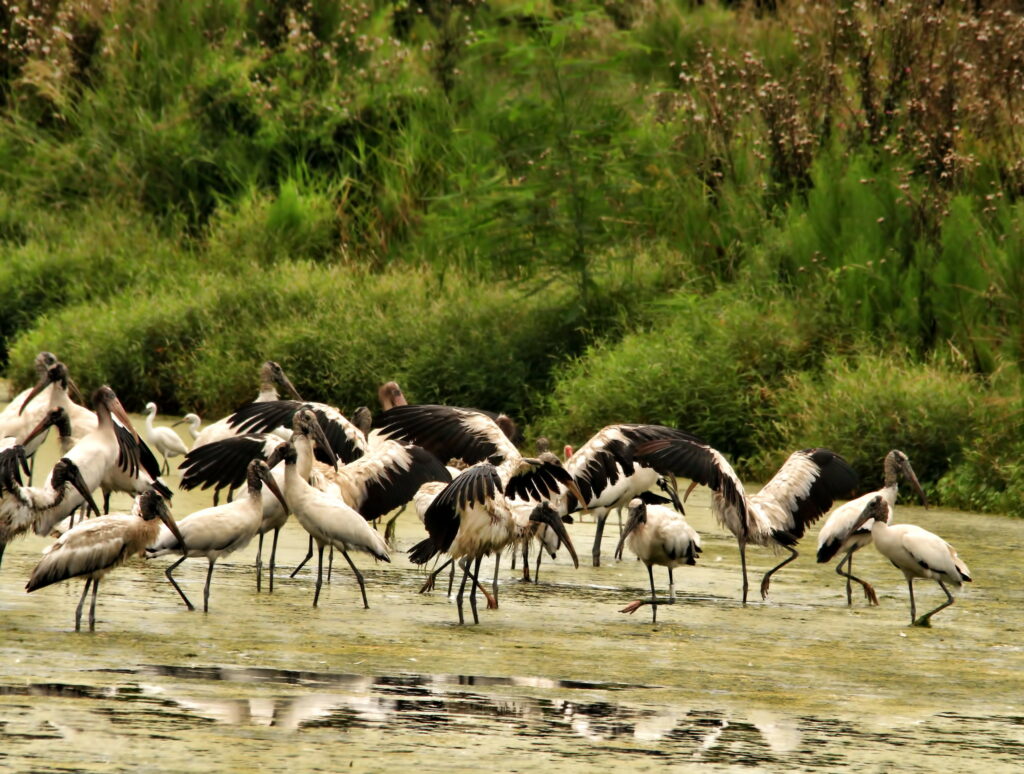
Image from Evangelio Gonzalez
Georgia’s landscape changed dramatically from 1925 to 2000. Farmland in the early 1900s occupied about two-thirds of the state, while forests occupied the remaining third. Urban and suburban areas were limited to a small percentage of the land. By the end of the century, forests covered almost two-thirds of the state, and farmland covered less than a third. Urban and suburban areas increased greatly and so did urban sprawl. These landscape alterations have caused changes in the bird populations, with some species benefiting and others suffering. New breeding birds, such as the American robin (Turdus migratorius), arrived in the new landscapes, which were suitable for nesting and raising their young. Other bird populations, such as the painted bunting (P. ciris), declined rapidly with changes in the landscape that eliminated habitats required for living and for raising their young.
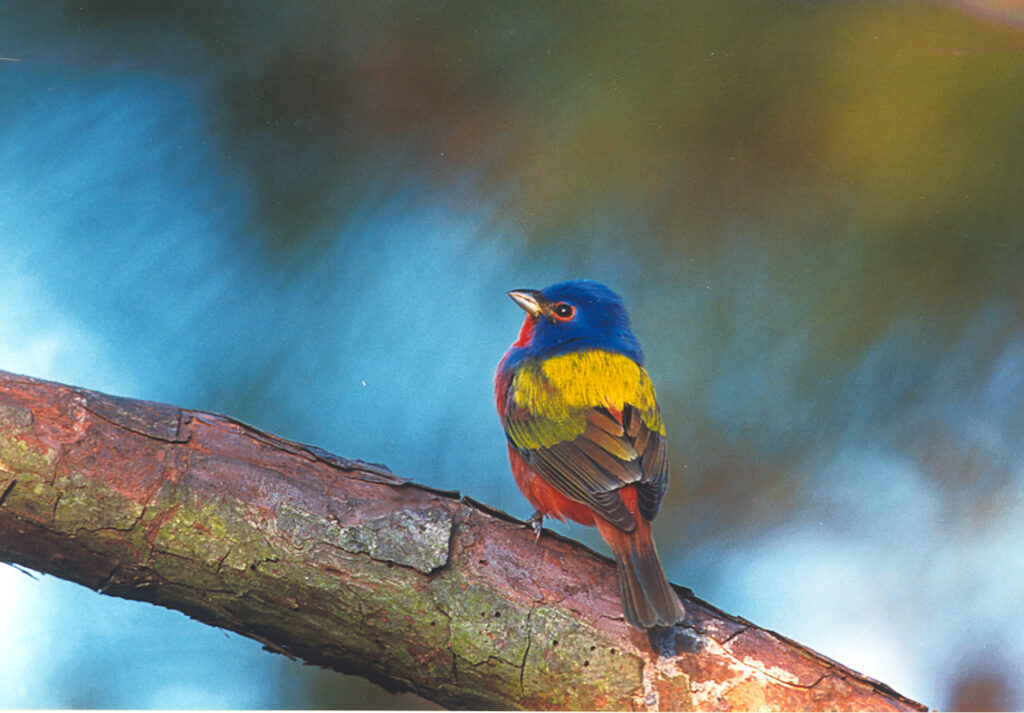
Photograph by Amanda Heffron Morgan
Bird Extinctions and Restorations
Some birds have become extinct in Georgia, and many species have populations that are at risk of extinction. Georgians can no longer see millions of passenger pigeons (Ectopistes migratorius) overhead, Carolina parakeets (Conuropsis carolinensis) in fruit trees, ivory-billed woodpeckers (Campephilus principalis) in the Okefenokee Swamp, or rare Bachman’s warblers (Vermivora bachmanii) in bramble thickets in the Coastal Plain. These birds are gone forever. However, the future is bright for the conservation of our birds. Some bird populations that declined in the mid-twentieth century have recovered with the aid of state and federal wildlife conservation programs. The bald eagle (Haliaeetus leucocephalus), osprey (Pandion haliaetus), peregrine falcon (F. peregrinus), and wood stork (M. americana) are now fairly common in Georgia because people cared enough to help restore their populations. In 1979, for example, Georgia had no eagle nests. Bald eagle restoration took fifteen years to complete and resulted in ninety-seven young eagles produced from eighty-one Georgia nests in 2003. This success will be repeated with other birds, such as the painted bunting (P. ciris), northern bobwhite (C. virginianus), and swallow-tailed kite (Elanoides forficatus), which all suffered population declines of up to 70 percent from 1966 to 1996. Research and management programs have been underway since 1996 to help restore populations of these species.
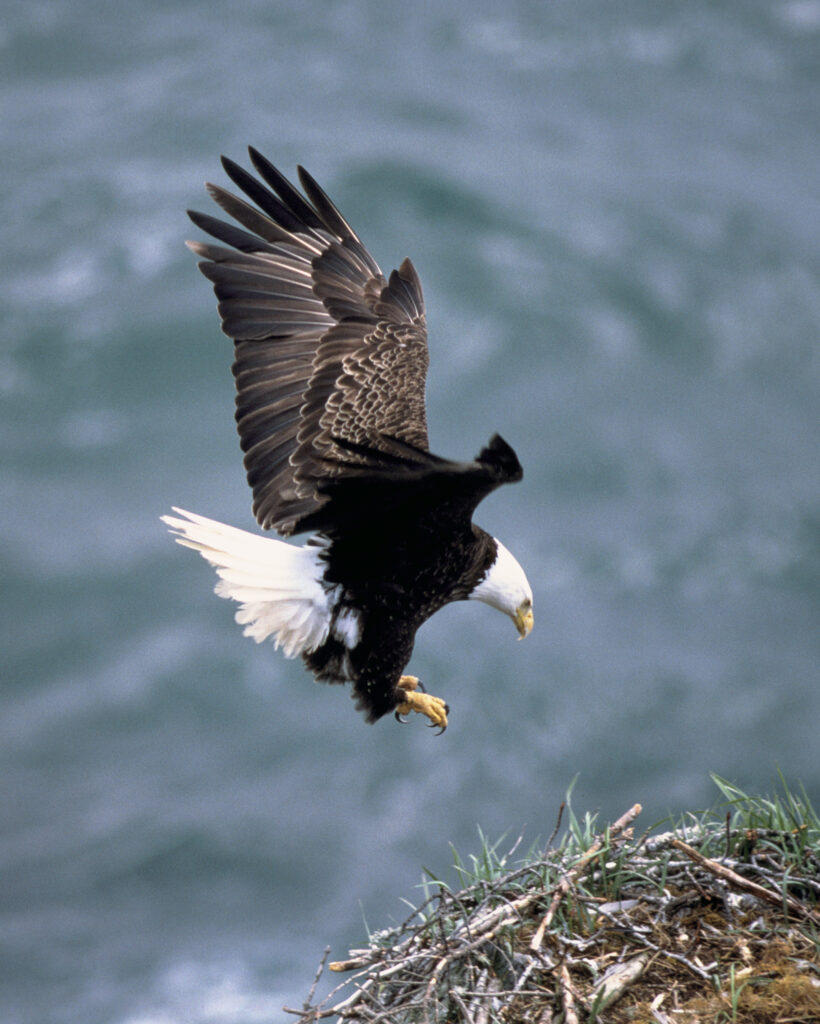
Courtesy of U.S. Fish and Wildlife Service
Invasions of fourteen northern breeding birds have occurred in north Georgia since the 1940s. Half of these birds are nesting in human-dominated habitats, such as housing subdivisions. Species that use human-dominated habitat include:
Common nighthawk (Chordeiles minor)
Barn swallow (Hirundo rustica)
House wren (Troglodytes aedon)
Common grackle (Quiscalus quiscula)
Brown-headed cowbird (Molothrus ater)
House finch (Carpodacus mexicanus)
Song sparrow (Melospiza melodia )
It is not a coincidence that some common names of birds are associated with human dwellings or farms—”house,” “barn,” and “cow.” House finches (C. mexicanus) were brought illegally to New York from the western United States during the 1940s and released on Long Island. This finch’s population exploded in Georgia from 1980 to 2000, and it is now a common nesting bird in Georgia suburban areas. It is not to be confused with the house sparrow (Passer domesticus), which is actually a weaver finch and not a native sparrow. This drab-colored exotic bird was brought from Europe in the 1850s, and its population in Georgia has been declining rapidly since 1950. Urbanization has also increased rapidly since 1950, which has allowed new breeding birds, such as the song sparrow (M. melodia), to invade north Georgia. During the spring of 1977 in Athens, the first song sparrow could be heard along a fifteen-minute walk through the University of Georgia, but by 1982 more than seventeen song sparrows could be heard on the same route. Most of the invading breeding birds, like the song sparrow, are welcome additions to gardens and backyards.
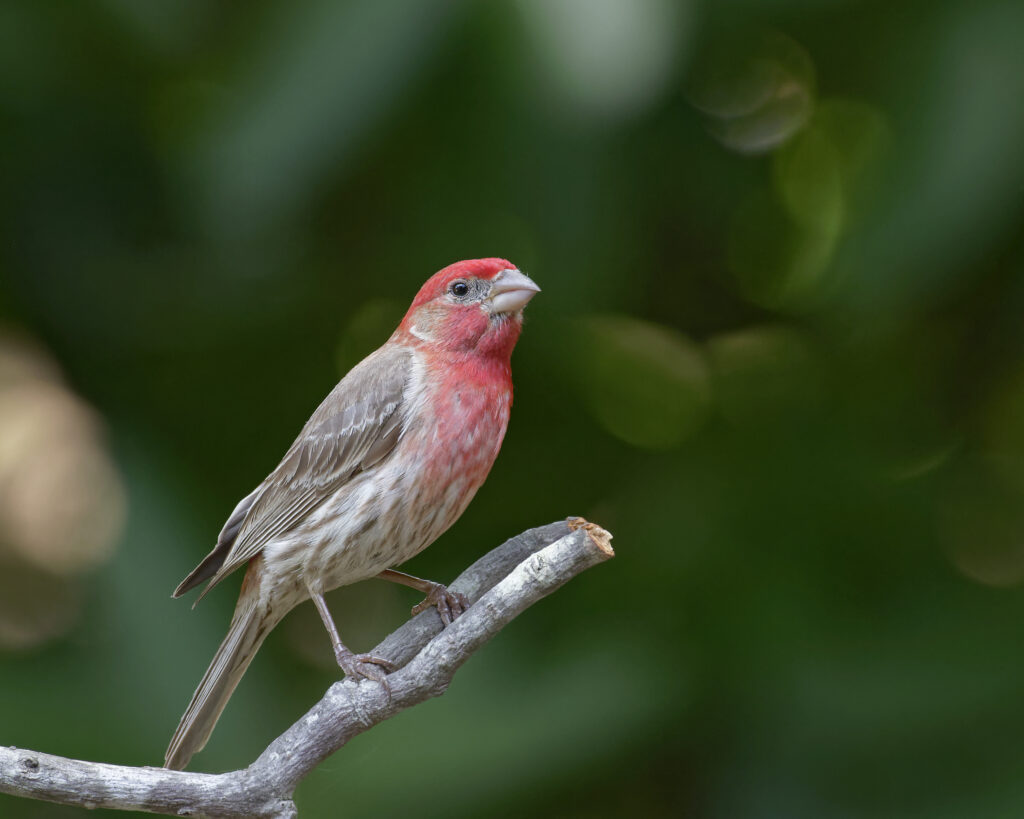
Image from Rick from Alabama
At the same time that urbanization increased in Georgia, the state’s forested areas also increased. Bird habitats became more fragmented with the increase in forest edge. Six species of breeding birds invaded north Georgia from the north to occupy the new forest and forest edges. The prothonotary warbler (Protonotaria citrea) invaded north Georgia from the south and may have benefited from the soil erosion, stream sedimentation, and increased flooding that expanded swamp forests and provided nesting habitat. Bird species that use forest or forest-edge habitat in Georgia include:
Ovenbird (Seiurus aurocapillus)
Solitary vireo (Vireo solitarius)
Whippoorwill (Caprimulgus vociferous)
Prothonotary warbler (P. citrea)
Northern parula (Parula americana)
Northern oriole (Icterus galbula)
Scarlet tanager (Piranga olivacea)
Wildlife restoration projects have produced positive results for many birds, but a plan to establish nesting Canada geese (Branta canadensis) in Georgia produced negative results for humans. Wildlife biologists brought Canada geese to Georgia from Pennsylvania in the 1950s to establish a resident breeding population. Some of the flight feathers of the young geese were clipped so that they could not migrate north during their first year. Since they could not learn to migrate, the geese became permanent residents. The goose population increased rapidly, and with increasing urbanization the hunting opportunities for geese declined. Unfortunately, Canada geese have become pests by polluting public swimming areas and fouling golf courses with their droppings. Wildlife biologists are conducting research to control goose populations and prevent these problems.
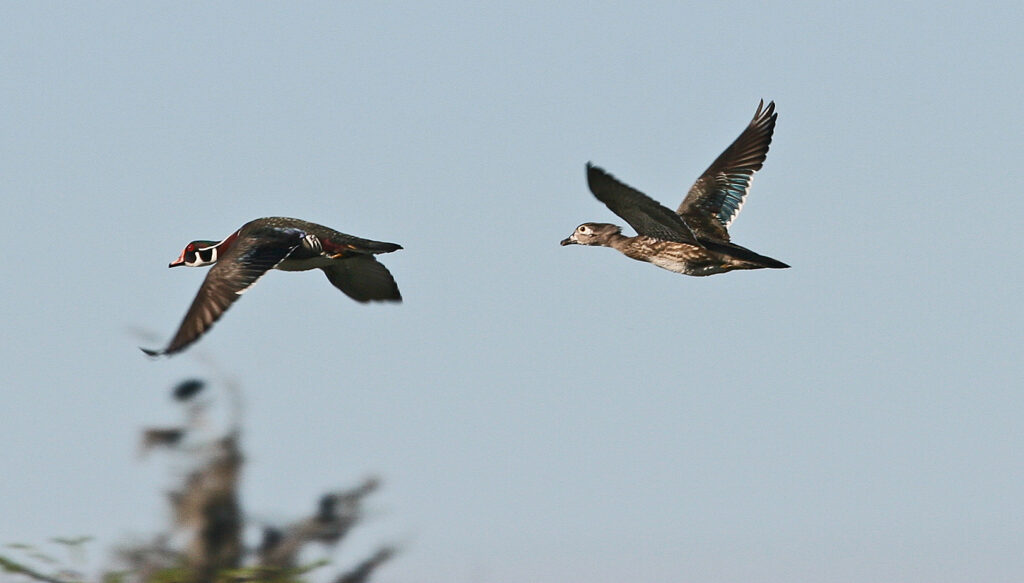
Photograph by Julius F. Ariail Jr.
Habitat conservation in concert with wildlife management is the key to protecting Georgia’s birds. Rapid changes to landscape and habitats will cause some birds to lose their nesting, migrating, and wintering homes. These birds deserve our attention and conservation efforts. Birds not only consume insects but also benefit our economy, as people spend millions of dollars in Georgia each year on outdoor recreational activities to enjoy birds.


